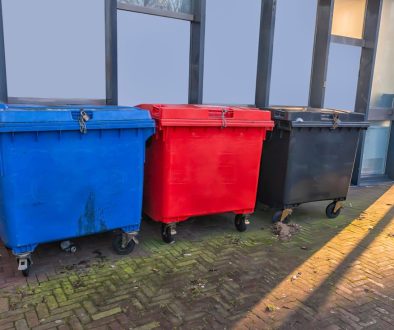Efficient waste management begins with understanding how to use skips effectively. At Enviro Skip Hire, we know that choosing the right skip and organising rubbish correctly can make a significant difference in handling waste. Properly loading a skip ensures that you maximize the available space, making rubbish disposal more cost-effective and environmentally friendly.
Before you start filling a skip, it’s essential to know the different sizes and their capacities. Selecting the right size for your rubbish needs can prevent overloading and extra costs. Additionally, organising your rubbish before loading can save time and create a safer and cleaner site. Proper organisation includes sorting items and planning how to place them in the skip for optimal space use.
Understanding Skip Sizes and Their Capacities
Selecting the right skip size is crucial for efficient rubbish management. At Enviro Skip Hire, we offer a variety of skip sizes to suit different project needs. Smaller skips, like the 2-yard mini skip, are ideal for small home clean-ups or minor renovation projects. They can hold roughly 20 bin bags of waste, making them perfect for garden rubbish or small DIY jobs.
For larger projects, like home renovations or construction sites, we recommend using larger skips. The 8-yard skip, often referred to as a builder’s skip, is one of the most popular choices. It can hold approximately 80 bin bags of waste. Understanding the capacity of each skip size can help you select the most suitable option, avoiding underuse or overloading, which can lead to additional costs and logistical issues.
Organising Rubbish Efficiently Before Loading
Before you start loading your skip, it’s important to organise your rubbish. Begin by sorting items into categories such as recyclables, non-recyclables, and hazardous materials. This not only helps in efficient loading but also promotes recycling and proper disposal of hazardous waste. Place items that can be recycled together and make sure hazardous materials are separated for safe disposal.
Creating a plan for loading the skip can also save time and maximise space. Start by dismantling larger items such as furniture or long planks of wood. Breaking these down into smaller pieces will allow you to fit more into the skip. Stack flat items like doors or sheet materials vertically to optimise space. By organising your rubbish before loading, you can ensure a more efficient and safer disposal process.
Layering and Packing Techniques to Save Space
Efficiently using the space inside your skip can make a big difference in how much rubbish you can fit. Start by placing the heaviest and bulkiest items at the bottom of the skip. This helps create a stable base and maximises the use of space. Items like broken furniture, bricks, and heavy bags of rubbish should be layered first, ensuring that there are no large gaps between them.
Next, fill in the gaps with smaller items. Use things like old clothes, small bags of rubbish, or other soft materials to act as fillers between the larger, bulkier items. This technique of filling gaps helps in making sure that no space is wasted. Finally, place lighter items on top, like cardboard or plastic bottles. By layering and packing your rubbish correctly, you can increase the amount of waste you fit into your skip, making the most of your hired space.
Items to Avoid and Proper Disposal Methods
It’s important to know which items should not go into skips. Certain materials are classified as hazardous and require special disposal methods. Items like asbestos, batteries, electrical appliances, and chemicals should never be placed in a skip. These materials can be dangerous and need to be disposed of following specific guidelines to ensure safety and compliance with legal regulations.
To properly dispose of such items, you can contact local recycling centres or hazardous waste disposal services. They have the right facilities to handle and dispose of these materials safely. Additionally, items like tyres, liquids, and gas cylinders are also not permitted in skips and should be taken to specialised disposal sites. By following these guidelines, you help create a safer environment and ensure that your rubbish is handled correctly.
Conclusion
Efficient use of skips is vital for managing rubbish effectively. We understand that selecting the right skip size, organising rubbish beforehand, and using proper packing techniques can greatly enhance waste management. Avoiding prohibited items and ensuring their proper disposal also plays a big role in promoting safety and environmental care.
By following these practices, you can handle your waste more efficiently, save time and resources, and contribute to a cleaner environment. To find out more about our skip hire services in Staffordshire and how we can help you with your waste management needs, visit Enviro Skip Hire today. Let us support your efforts in keeping Staffordshire clean and green.




